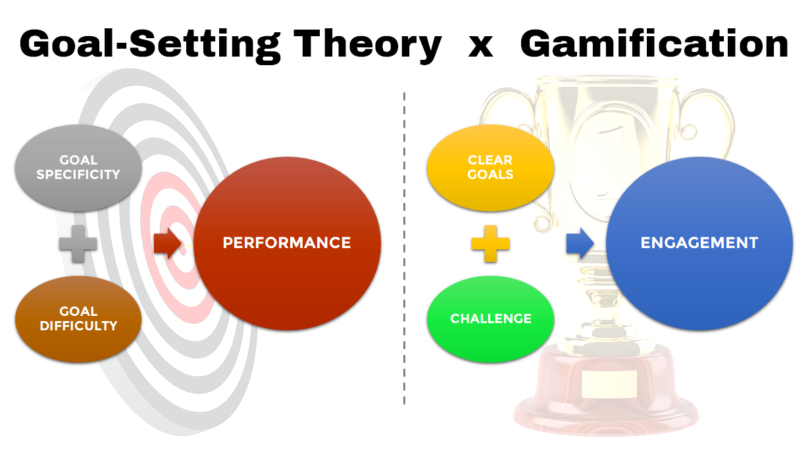Last week was Gamification Europe 2020, an amazing forum to exchange experiences and learn from what everyone is doing in the gamification world. On the first day of the conference, I gave a talk about Personalized Gameful Design. If you missed it, you can check below the slides I used for the presentation and watch the video recording.
There were several interesting questions from the audience! But unfortunately, I did not have time to answer them during the talk. So, I wanted to share my answers to these questions here in the blog.
Q: How you ensure that students playtest early in the process?
This question was in reference to the examples on slides 5 and 6, where I showed some ways I used gamification to let students personalize exactly what practice exercises they wanted to do to help their learning on some Computer Science courses. Having students to test innovations in the course is indeed a challenge. Instructors are required to publish the course syllabus at the start of the term where everything is already defined. So, I can’t really ask the students that are the target of the gameful course to test it. Something that I have done is asking the teaching assistants for feedback. They are graduate or undergratuate students, so, they can give feedback from a student perspective. But they are not the students who will actually take that course in the future. It may not be an ideal solution, but that’s what I could do. Obviously, we also ask for feedback at the end of the term from the students who actually used the game elements. Then, use the feedback to improve the course for the next term. This form of feedback and improvement has been really useful. But it’s a form of late feedback, not an early one like the question asked.
Q: Beyond reaching 1,000 points, did you give them a “hero’s journey” type objective? By reaching 1,000 points, what would this achieve in the game? Did it signify something specific?
This question was in reference to the example on slide 5. For that course, students could earn points for each question of their choice that they completed. The quests system corresponded to a portion of their course grade (e.g., 10%). So, by completing at least 1,000 points, they would earn 10% of their course grade. Additional points did not increase their grade further, but some students did more quests just for the learning. By completing less than 1,000 points, students would earn a proportion of the 10% in the course grade (e.g., 500 points = 5% of the grade, etc.). We also had a levelling system with four levels named after jobs related to the course, such as Junior System Analyst or Senior System Analyst. Someone who completed the 1,000 points would end the course at the top level. This was done to give an additional sense of progression and I suppose that it may feel like a hero’s journey in some way. But we certainly did not have a clear narrative of a journey. That would have been an interesting idea, but we did not have it at that time. By the way, there are more details about this experience in this post.
Q: Have you identified any correlations between specific demographic types and preferences towards certain game elements?
Yes, you can see more details in this post.
Q: Which element was more popular and which was less popular?
In our classification of gameful design elements, Immersion (e.g., Mystery Box, Theme, Narrative) and Progression (e.g., Levels, Progress Feedback, Meaning) were the most popular, whereas Assistance (e.g., Beginner’s Luck, Signposting, Free lunch) was the least popular group. But note that the most popular group had an average score of 4.17/5.0 and the least popular had 3.02/5.0. So all game elements seem to be enjoyable on average, although there were some that were significantly more enjoyable than others.
Q: Where do you see personalization in terms of changing community behaviours?
Well, I haven’t done any work specifically in this area. But if someone is going to create a game or gameful application to encourage people to engage in community behaviours, surely I think that personalizing their experience would help. For example, each person has different skills/abilities/time/etc. and can contribute to the community in different ways. So, you should not ask everyone to do the same for the community, you need to ask each one to contribute according to their strengths and availability. Not everyone likes the same game elements. So, you should not use the same elements to motivate everyone. Ideally, you should use personalization/customization so that each person has an experience using the game elements that work for them. Not everyone likes the same type of rewards. For example, some may prefer tangible rewards such as gift cards, etc. Others may just prefer to hear that they’re contributing to improving their community. So, if you want to use rewards to motivate people to engage with their community, you need to personalize the rewards to use what works better for each person. A non-personalized gameful system would probably work to motivate community engagement, but I believe that a personalized/customized experience would probably be even more effective.
Q: Can you give examples of persuasive strategies that you have used?
In our research in 2018, we tested the following strategies: goal-setting/suggestion, competition, comparison, cooperation, customization, reward, punishment, personalization, simulation, and self-monitoring/feedback. Note that these persuasive strategies can be implemented as game elements or not, but in this specific research, we tested how they would be perceived by participants when implemented as game elements. There may be an overlap between persuasive strategies and game elements if you use the game elements to persuade people to do something. But they are not the same. It is also possible to use persuasive strategies that are not game elements (e.g., expert advice, nudges, etc.), and similarly, it is possible to have game elements that are not directly trying to persuade.
Q: How do you cope with students with different levels of technology access/ability, e.g., if they share a laptop?
That is a great question, but unfortunately, I don’t think I have enough experience with this kind of challenge to provide useful suggestions. I teach at a Computer Science program and having access to a computer is a requirement for all students because they have many programming assignments that absolutely need to be done on a computer. If students don’t have their own equipment, they have free access to the computer labs on the campus. Well, at least in normal times when the campus is open. Obviously, students can’t access the labs while the pandemic has closed the campus; but then, each student must have access to a computer to be able to follow the online courses anyway. I am sure that this is not the reality for everyone, but I’m lucky that this is the reality where I teach, we can generally assume that all students have access to equipment to work it. So, we can add technology-based game elements to our courses without issues.
A huge thank you to everyone who attended the talk, participated, and asked questions!




1 Comment